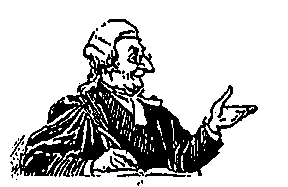Whose Horse Is This?
By Douglas Clark Hollmann, Esq.

When you sign a document, odds are that there will be notary language at the bottom, lines for witnesses to sign, and assorted other spaces and blanks that seem necessary to make the document look “official”. People sometimes wonder whether all this is necessary. The answer is usually not, but still, all these ornate embellishments do serve a useful purpose at times.
A case in point involved a black Arabian stallion that two gentlemen purchased at auction. One man owned 20% of the stallion; the other man owned 80%. The stallion was kept at a Maryland farm where the Maryland owner lived. The 20% owner lived in Wisconsin.
Later, the Wisconsin owner decided to buy out the Maryland owner. He drove to Maryland and the two men sat down at a kitchen table to work out a deal. They first haggled over two other horses and agreed upon a price, in diamonds, to pay for those horses. (The Wisconsin owner had brought with him a bag of diamonds and, as they negotiated each horse, would move a certain number of diamonds across the table to the Maryland owner. Apparently, both men knew enough about diamonds that they could use them as the medium of exchange, which makes this transaction even more unusual.) The Wisconsin owner wrote each transaction down on a legal-sized pad of yellow paper. They then, according to the Wisconsin owner, negotiated a price for the stallion. The Wisconsin owner contended that he paid the Maryland owner in diamonds for the stallion and wrote the name of the horse and the amount of the purchase price, in dollars, on the pad below the language about the two horses he had already bought. Both men signed the sheet of paper but no one witnessed their signatures.
There were three other people in the kitchen during these negotiations but the Maryland owner told the Wisconsin owner not to say anything about the stallion, because he would owe a commission to a young lady in the room. He also asked if he could keep the stallion an extra month to finish breeding him to a mare that he had not taken. The Wisconsin owner agreed.
The next day, the Wisconsin owner loaded up the two horses and went back to Wisconsin. A few weeks later, the Maryland owner told the young lady to move the stallion to a farm in Towson. She asked her boss if she should call the Wisconsin owner, thinking he was still an owner of the horse. The Maryland owner replied that the Wisconsin owner would never see the horse again. The young lady called the Wisconsin owner anyway, who told her what had happened in the kitchen. He immediately left for Maryland. Later that night he was arrested in Towson for trying to ‘steal’ his horse. A lawsuit followed. In court, the Maryland owner denied the signature on the paper was his. Experts disagreed as to whether it was his signature. With no witness as to who was telling the truth, the stallion ended up being sold at a loss for the Wisconsin owner.
The important point from this case? Get it in writing; get it signed; and get it witnessed.
The author is a local attorney specializing in Intellectual Property law and can be reached at LawEur@aol.com.
|
Back
|

